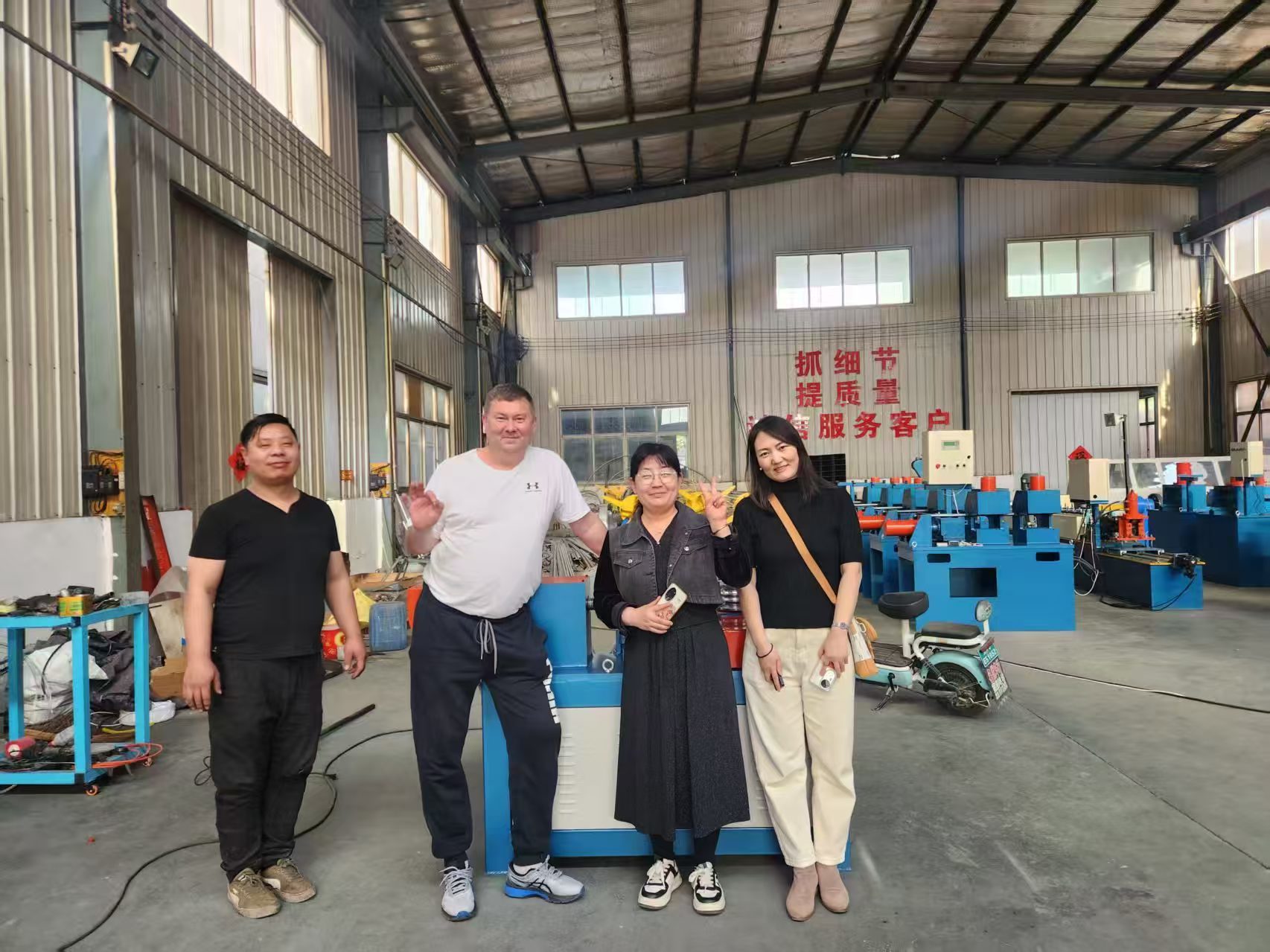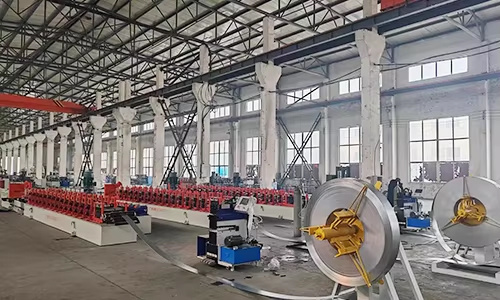The Role of Scaffolding Welding Machines in Sustainable Manufacturing
2025-08-08
The Role of Scaffolding Welding Machines in Sustainable Manufacturing
Table of Contents
1. Introduction to Scaffolding Welding Machines
2. Understanding Sustainable Manufacturing
3. The Importance of Welding Machines in Manufacturing
4. Key Features of Scaffolding Welding Machines
5. Environmental Impact of Welding Technologies
6. Enhancing Efficiency and Productivity with
The Role of Scaffolding Welding Machines in Sustainable Manufacturing
Table of Contents
- 1. Introduction to Scaffolding Welding Machines
- 2. Understanding Sustainable Manufacturing
- 3. The Importance of Welding Machines in Manufacturing
- 4. Key Features of Scaffolding Welding Machines
- 5. Environmental Impact of Welding Technologies
- 6. Enhancing Efficiency and Productivity with Scaffolding Welding Machines
- 7. Case Studies: Successful Implementation of Scaffolding Welding Machines
- 8. Future Trends in Scaffolding Welding Technology
- 9. Frequently Asked Questions (FAQs)
- 10. Conclusion
1. Introduction to Scaffolding Welding Machines
Scaffolding welding machines play a pivotal role in modern manufacturing, especially within the metalworking sector. These machines are designed to facilitate efficient and robust welding of scaffolding materials, which are essential for various structural applications. As industries increasingly gravitate toward sustainable practices, the significance of these machines has become more pronounced. In this article, we will explore how scaffolding welding machines contribute to sustainable manufacturing, enhancing not only productivity but also environmental stewardship.
2. Understanding Sustainable Manufacturing
Sustainable manufacturing refers to the creation of products using processes that are environmentally friendly and conserve resources. This concept encompasses several practices, including reducing waste, minimizing energy consumption, and utilizing renewable resources. The integration of advanced technologies, such as scaffolding welding machines, can significantly enhance the sustainability of manufacturing processes. By adopting these innovations, manufacturers can align their operations with global sustainability goals, significantly impacting the environment and society.
3. The Importance of Welding Machines in Manufacturing
Welding machines are essential in metal manufacturing, playing a critical role in joining materials efficiently and effectively. Without effective welding, the integrity of metal structures—including scaffolding—would be compromised. Scaffolding welding machines are specifically designed to address the unique requirements of scaffolding fabrication. They ensure high-quality welds, enhance safety, and provide the reliability needed in construction and industrial applications. Additionally, the use of advanced welding technologies can significantly reduce the carbon footprint associated with traditional manufacturing methods.
4. Key Features of Scaffolding Welding Machines
Scaffolding welding machines are equipped with several advanced features that promote efficiency and sustainability. Key features include:
4.1 Automated Welding Processes
Many scaffolding welding machines utilize automation technology, which not only speeds up the welding process but also ensures consistent quality. Automation minimizes human error, leading to fewer defects and less wasted material.
4.2 Energy Efficiency
Modern scaffolding welding machines are designed to be energy-efficient. They consume less power while maximizing output, thereby reducing energy costs and contributing to lower greenhouse gas emissions.
4.3 Versatility
These machines can adapt to various welding techniques, such as MIG, TIG, and arc welding. This versatility allows manufacturers to select the best method for their specific scaffolding materials and applications.
4.4 User-friendly Interfaces
With intuitive controls and user-friendly interfaces, scaffolding welding machines reduce the learning curve for operators, ensuring faster training and increased productivity.
5. Environmental Impact of Welding Technologies
The manufacturing sector is one of the largest contributors to environmental pollution. Scaffolding welding machines, particularly those with sustainable technologies, can significantly mitigate this impact.
5.1 Reduction in Waste
By producing high-quality welds with fewer defects, scaffolding welding machines contribute to less material waste. This reduction in scrap not only conserves resources but also minimizes disposal costs.
5.2 Lower Energy Consumption
Energy-efficient welding machines consume less power during operation. This reduction in energy use results in lower carbon emissions, aligning with global efforts to combat climate change.
5.3 Sustainable Materials
Many scaffolding welding machines are compatible with recycled and sustainable materials, further enhancing their environmentally friendly profile. Utilizing such materials reduces the demand for new resources and promotes a circular economy.
6. Enhancing Efficiency and Productivity with Scaffolding Welding Machines
Efficiency and productivity are key drivers in manufacturing, and scaffolding welding machines excel in both areas.
6.1 Faster Production Times
The automation capabilities of modern scaffolding welding machines lead to faster production cycles, allowing manufacturers to meet tight deadlines without sacrificing quality.
6.2 Quality Assurance
With advanced monitoring systems, these machines can ensure that every weld meets the required standards. This quality assurance reduces rework and enhances the overall reliability of the final product.
6.3 Labor Efficiency
By automating repetitive tasks, scaffolding welding machines free up skilled labor for more complex jobs, thereby optimizing workforce deployment and enhancing overall operational efficiency.
7. Case Studies: Successful Implementation of Scaffolding Welding Machines
Several companies have successfully integrated scaffolding welding machines into their manufacturing processes, showcasing the benefits of this technology.
7.1 Case Study: Company A
Company A, a leading scaffolding manufacturer, adopted a new scaffolding welding machine that improved their production speed by 30%. The automated processes reduced labor costs, and the energy-efficient design cut electricity usage by 20%.
7.2 Case Study: Company B
Company B focused on sustainability by incorporating recycled materials into their scaffolding products. The use of advanced scaffolding welding machines allowed them to maintain quality while reducing material waste, thus enhancing their eco-friendly initiatives.
8. Future Trends in Scaffolding Welding Technology
As technology continues to evolve, scaffolding welding machines are expected to undergo significant advancements.
8.1 Integration of AI and IoT
The future will likely see greater integration of artificial intelligence (AI) and the Internet of Things (IoT) in welding machines. These advancements can lead to predictive maintenance, real-time monitoring, and enhanced decision-making capabilities.
8.2 Continued Focus on Sustainability
As sustainable manufacturing becomes a priority for businesses worldwide, the demand for scaffolding welding machines that prioritize eco-friendly practices will increase. Manufacturers will continue to seek technologies that enhance sustainability while maintaining productivity.
8.3 Advances in Materials
The development of new materials will also influence the design and functionality of scaffolding welding machines. These advancements will enable manufacturers to produce stronger, lighter, and more sustainable scaffolding solutions.
9. Frequently Asked Questions (FAQs)
9.1 What are scaffolding welding machines used for?
Scaffolding welding machines are used primarily for welding scaffolding materials to create robust structures for construction and industrial applications.
9.2 How do scaffolding welding machines contribute to sustainability?
These machines minimize waste, lower energy consumption, and can utilize recycled materials, contributing to more sustainable manufacturing practices.
9.3 What types of welding can scaffolding welding machines perform?
Scaffolding welding machines are versatile and can perform various welding techniques, including MIG, TIG, and arc welding.
9.4 How do automated welding processes improve production efficiency?
Automated processes reduce human error and speed up production cycles, allowing manufacturers to meet deadlines without sacrificing quality.
9.5 What are the future trends for scaffolding welding technology?
Future trends include increased integration of AI and IoT, a greater focus on sustainability, and advances in materials that enhance the performance of scaffolding welding machines.
10. Conclusion
Scaffolding welding machines are indispensable in the pursuit of sustainable manufacturing. They not only enhance productivity and efficiency but also contribute significantly to environmental conservation. By adopting innovative technologies and practices, manufacturers can create products that meet market demands while promoting a sustainable future. As we continue to evolve in our manufacturing processes, the role of scaffolding welding machines will undoubtedly expand, paving the way for a greener, more efficient industry.
Key words:
RELATED INFORMATION
Recently, foreign trade personnel have conducted on-site learning on the company's equipment updates
Recently, foreign trade personnel have conducted on-site learning on the company's equipment updates
2025-05-15
A customer from Inekhusko, Russia, took a 10-hour flight with multiple transfers to visit our factory and inspect the equipment they had previously ordered from our company.Our foreign trade staff warmly received the customer.
2025-04-24
Photovoltaic bracket equipment is a special bracket planned for the placement, installation.
2024-05-22








